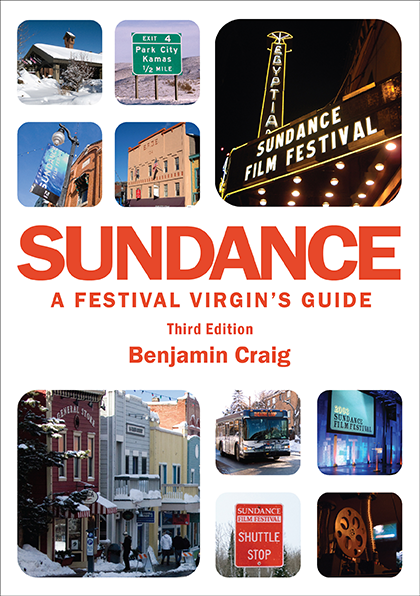History of the Sundance Film Festival (Part 2)
By Benjamin Craig
< Back to Part 1: In the Beginning
Encore, Please!
Planning commenced for the 1979 festival the following spring and enough money was raised through a combination of sponsors and private donations to cover the administration costs (but not the debt). With a new retrospective slate and the independent feature film competition again featuring eight films, the 1979 festival continued where the previous year had left off. At the close of the event, ticket sales were up on the year before (once again, independent films proved to be a major drawing card), and the organisers had even managed to knock off around half of the $40,000 debt.
As the festival looked to a third outing, debt again proved to be a major factor in ensuring the young event's continued existence. Initial planning for the third Utah/US Film Festival began in March 1980, however early in the process, director Sydney Pollack - also on the festival's board of directors - half-jokingly suggested to the management team they "... ought to move the festival to Park City and set it in the wintertime." He went on to point out that the event would be "... the only film festival in the world held in a ski resort during ski season, and Hollywood would beat down the door to attend." Once the idea sank in, the rest of the festival board and management seemed to agree and the 1980 festival was pushed back to January 1981. The move to Park City not only proved to be a boon for festival attendance, but shrewd planning placed the event during the third week of January, filling what was traditionally a dead period for the local tourist industry.
The third festival kicked off with a larger program of independent films than ever before; the slate reportedly expanded at the suggestion of program director Lory Smith, who pointed out that independent films were considerably cheaper to show because, unlike Hollywood films, it wasn't necessary to pay rental fees to screen them. The 1981 festival also brought another name change for the event when it became the United States Film and Video Festival. The word "video" was added because the board of directors felt it was important to be inclusive of this new visual medium, even though the festival wasn't actually able to program any videos that year.
At the time, it appeared that the third United States Film and Video Festival was a resounding success. However, after the curtain fell for the first time in Park City, it became apparent that although many films had drawn record audiences, heavy snowfalls during the event had brought the overall attendance down. But perhaps a more worrying discovery for the festival management and directors was the fact that the event had managed to slide further into the red to the tune of about $100,000. While most people involved were keen for the festival to continue, there was pressure from some factions within the organisation to abandon the focus on independent films in favour of screening more glamorous Hollywood pictures, which some believed would help attract sponsors. Fortunately, this never came to pass as financial support for the next festival was ultimately secured through the Utah Film Commission, a couple of key donors, and a line of credit with a local bank (personally signed for by the festival's board). This allowed plans to move forward for the fourth annual United States Film and Video Festival in 1982.
Park City was kind to the young event in its fourth year. The snowfalls were mercifully light, preventing the attendance problems of the previous year. The lack of snow also meant that ski-visitor numbers were significantly down, so for the first time, the locals viewed the festival as a positive thing for the town. In fact, the visitor numbers generated by the festival helped take the edge off what had otherwise been a disastrous ski season so far that year.
The 1982 festival also saw the program expand yet again. The documentary competition had its own section for the first time, a collection of short films was included, and to support the video component of the event's title, a program was added to highlight video art, video documentaries, and movies made for television (the latter was a slightly odd addition because most TV movies were shot on film at that time). All in all, the 1982 festival ended up being the most successful to date, with box-office numbers up on previous years, significant progress toward reducing the debt, and the widest range of films screened yet. The video program, however, proved to be disappointing and was dropped for the 1984 event, even though the festival held on to its "and Video" moniker for another year.
The next two years, 1983 and 1984, proved pivotal for the festival as it firmly cemented its feet on the national film map and, more importantly, in the minds of the press. Despite extremely tight funding, the programs consistently rewarded attendees with a broad range of independent films, supported by the more glamorous premieres and retrospectives. However, debt continued to plague the festival, and after the 1984 event, dissention was rife amongst the management and the board of directors, threatening to scuttle the festival altogether.
Continue reading... Part 3: One Film Festival, Slightly Used, Needs Good Home >
Get Your Copy Now

The essential handbook for filmmakers, film fans, and film industry professionals looking to attend the Sundance Film Festival. Available in paperback and digital formats.
Find Out More >
